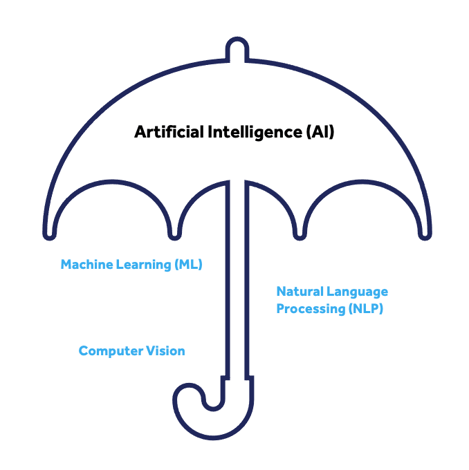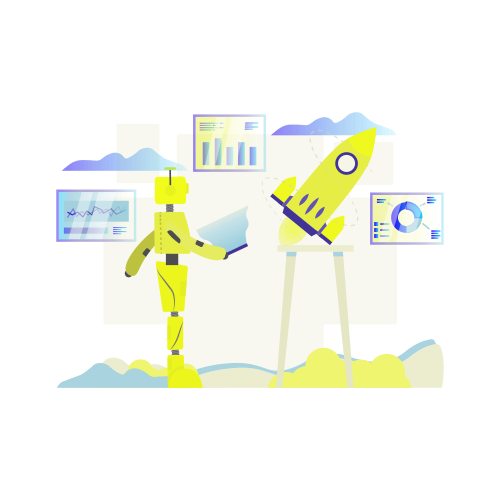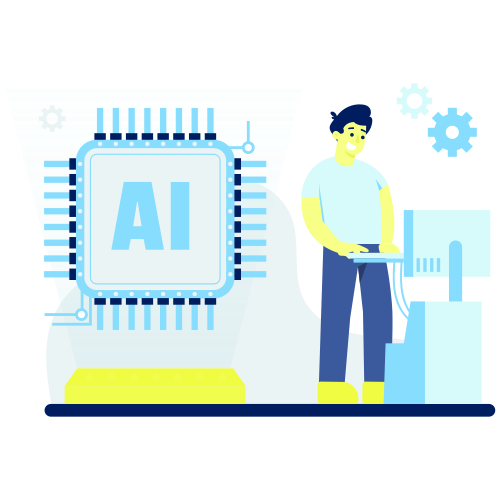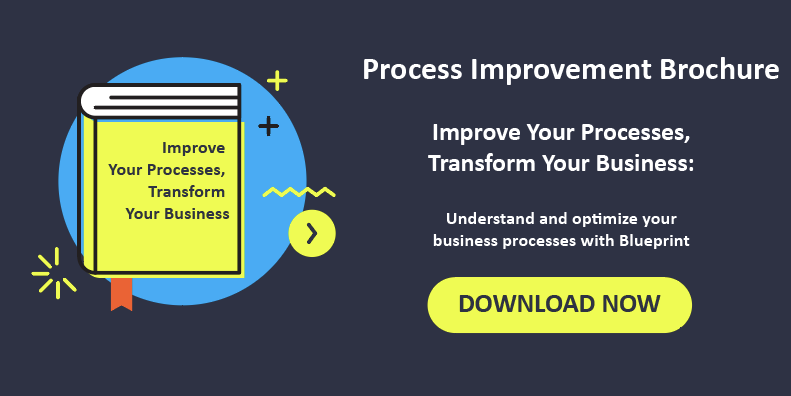Intelligent Automation Solutions for Enterprise Processes
Large organizations are well on their way in their automation journeys. This year, Deloitte predicted that 72% of companies would have implemented RPA (robotic process automation) to accelerate their digital transformations. Now it seems, industries are actively looking at intelligent automation (IA) solutions to augment their use of RPA. Intelligent automation is, after all, the next step in digital transformation because it hits all the right chords: automating end-to-end processes instead of only a small part of them means more relief on administrative burdens, a significant reduction in costs, gains in efficiency, and the greater ability to deliver better customer experiences.
Yet intelligent automation can quickly become a rabbit hole. With the sheer number of applications it can provide, you might find yourself wondering where do I start? How do I move from RPA to enterprise intelligent automation?
First, it's important to understand what the different artificial intelligence technologies that define intelligent automation are. Then, understand how those technologies can be applied with some tangible, real-world applications of intelligent automation solutions that vendors provide and the industries using them today.
How Does Artificial Intelligence (AI) Fit into Intelligent Automation Solutions?
Intelligent automation is the combination of the rules-based task execution that RPA provides, with the intelligence that AI delivers. A simple definition of artificial intelligence is the ability of systems to perform tasks that require reason, judgment, and decision-making. Put simply, AI is a computer's ability to collect and extract information and apply logic to that data to make a decision.
Artificial intelligence, however, is an umbrella term that can be further broken down into sub-categories of other technologies. This is where intelligent automation solutions can start to get complex. With examples of how industries are using these technologies and the products or services that vendors within this space provide, this complexity becomes a little clearer.

Machine Learning as an Intelligent Automation Solution
Machine learning is a crucial piece of tech that's sometimes categorized as a stand-alone technology, but more commonly, is included in the AI bucket. Machine learning can be defined as systems using data to improve those systems' performance without explicit instructions. A good example is discovering patterns in data and then using those patterns to make accurate predictions.
A well-known example is Netflix's use of machine learning to recommend and predict the media users are most likely to consume. Netflix leverages a user's historical consumption data to find new media that they might be interested in, even changing the tile images of that media to align with historical genre preferences.
For heavily regulated industries like Banking, Financial Services, or Insurance, Deloitte provides an example of machine learning being leveraged to improve fraud detection quality and accuracy. Using databases that include the date, time, merchants, prices, etc., from credit card transactions, a machine learning algorithm can better predict when fraudulent transactions are made. Similar criteria and logic could be applied to predict insurance fraud as well.
Intelligent Automation Solution Example:
DataRobot provides software for banking that can be implemented to build more precise credit models to reinforce lending processes, optimize trade execution and routing, and leverage analytics to understand client price sensitivity and preferences.
Natural Language Processing as an Intelligent Automation Solution
Natural language processing (NLP) is a technology that interprets language and uses that information to make decisions and take an action.
Common examples that use NLP are chatbots or virtual home assistants like Amazon's Echo or Google Home.
Banks have aggressively adopted this technology to make their call centers and triaging processes more elastic. This use case allows customers to present their issue or request with telephone prompts and automatically direct those to the appropriate department. NLP for triaging like this removes the need for manual execution of these processes that are limited to a finite bandwidth, which would otherwise cause massive bottlenecks when there are surges in demand.
Intelligent Automation Solution Example:
Progress Software provides a product called Kinvey NativeChat—a chatbot that helps insurance companies automate appointment scheduling and implement a self-service model for customers to select an insurance policy easily. This adoption of NLP via a chatbot provides a digital-first experience to customers, improves call center efficiency, and also enables human workers that used to have to navigate these repetitive tasks to focus on more critical, value-add initiatives.
Computer Vision as an Intelligent Automation Solution
Computer vision can be defined as technology that enables computers to parse and interpret images.
A familiar example is facial recognition technology used to unlock mobile phones and is now even being applied as a security measure in modern residential buildings. At an industrial level, key examples exist in banking where computer vision is used to detect fraudulent banknotes to enhance security.
Computer vision can also be used to improve the customer experience. BBVA (Banco Bilbao Vizcaya Argentaria) uses computer vision to accelerate and enhance the onboarding process of new customers. Using this technology, prospects can open bank accounts by merely taking a selfie.
Intelligent Automation Solution Example:
Ocrulus provides software that can help large organizations in Financial Services to digitize financial documents that enable digital audits, improving both compliance, and removing this mundane task from manual labour that slows its execution and introduces error.
Blueprint: Your Intelligent Automation Solutions Engine
Effective intelligent automation implementation is dependent on synergy. By definition, artificial intelligence is combined with RPA to marry the task execution of bots with the intelligence and use of analytics that AI provides so more end-to-end business processes can be automated for bigger returns.
The reality is that a solution is needed to consolidate these tools; otherwise, a disconnected, siloed architecture will simply result in future failure.
That's where Blueprint comes in. Blueprint's Business Transformation Platform is the heart of your intelligent automation toolchain. Delivering the most powerful automation design environment on the market where end-to-end automations that combine RPA and AI technologies can be designed, planned, and managed in what we call a Digital Blueprint.
Digital Blueprints contain everything you need to drive intelligent automation in your organization. From detailed process flows, functional and non-functional requirements, user stories, compliance, and regulatory requirements, to both functional and acceptance tests, among other critical information for successful solution delivery. They can be used to drive any number of intelligent automation use cases such as RPA, the migration of legacy applications, custom development, or for commercial off the shelf technology implementations.
Speak to one of our experts today and discover how Blueprint can help you navigate the complexity of intelligent automation and grow your automation ROI with higher-quality development and capabilities unavailable in any other tool on the market.
Share this
Recent Stories

Intelligent Automation: The Next Step in Digital Transformation

From RPA to APA: Unlocking the Next Era of Intelligent Automation



